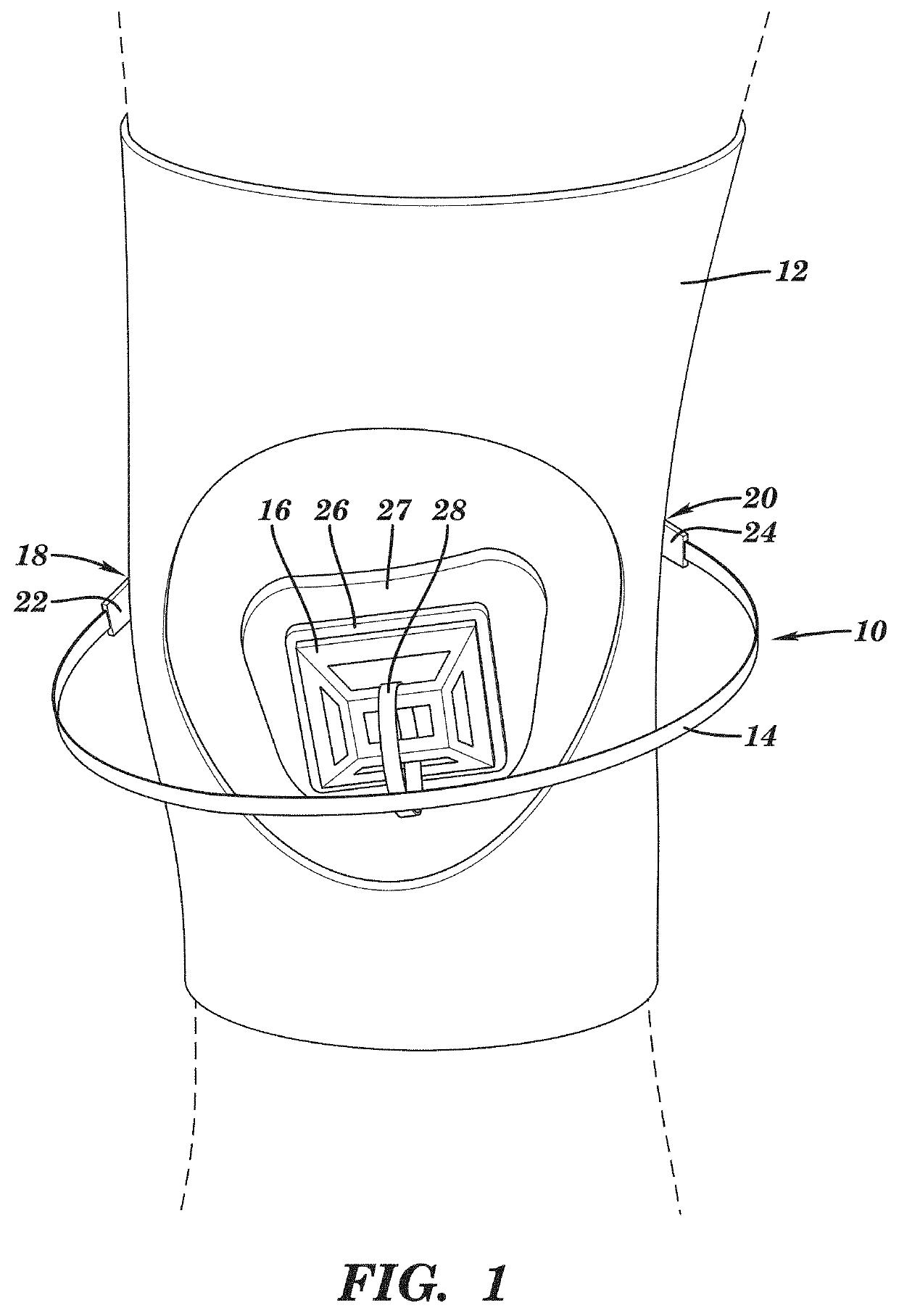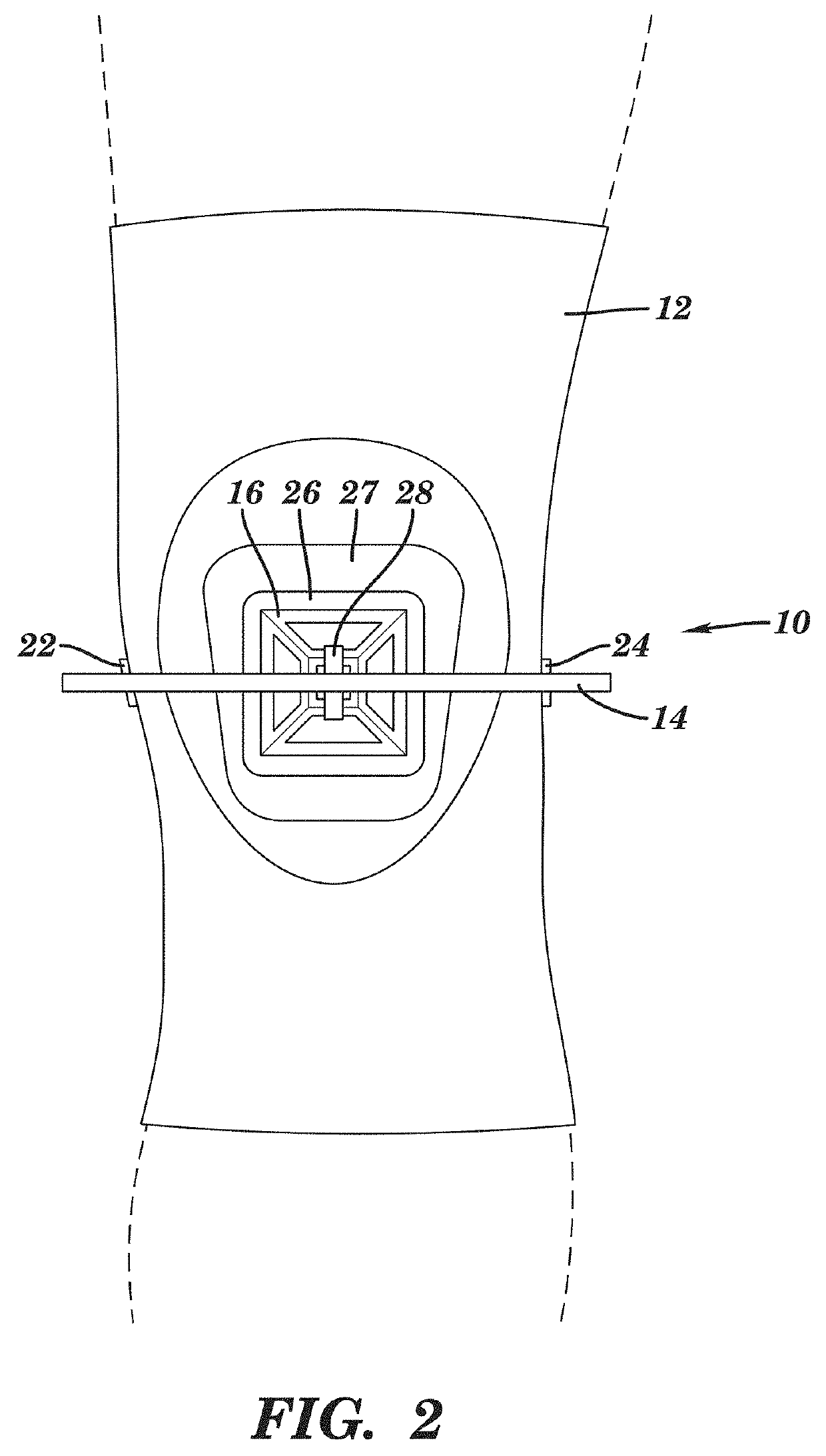Device for managing patellofemoral pain and methods of use thereof
a technology for managing patellofemoral pain and devices, applied in medical science, non-surgical orthopedic devices, etc., can solve the problems of relatively little attention, pain, and friction of moving bones along this rough surface, so as to reduce and/or eliminate knee pain, reduce pain, and track more easily and naturally
- Summary
- Abstract
- Description
- Claims
- Application Information
AI Technical Summary
Benefits of technology
Problems solved by technology
Method used
Image
Examples
example 1
Management of Patellofemoral Pain
[0090]The development of this device is the result of numerous attempts to alleviate the inventor's own patellofemoral pain due to early onset arthritis in the knees. Having previously used a variety of knee supports, braces, and taping methods along with physical therapy, the inventor had limited and varying reduction in knee discomfort after long sessions of running and cycling. After suffering years of knee discomfort, the inventor became acutely aware of where and when the pain presented itself.
[0091]It has been approximately 13 months since the user began using the device on his right knee (most problematic) while running and cycling. During that time the device has gone through several revisions and modifications to improve durability, but the function has been consistent, to pull the patella gently away from the femur in the trochlear groove.
[0092]Prior to using the device, the inventor relied on kinesiology taping or knee support / braces to he...
example 2
X-Ray Evidence of Patella Realignment and Therapeutic Benefit
[0094]An x-ray was performed on the user's knee without the device of the present invention as shown in FIG. 11. The x-ray showed a patellofemoral space of 8 mm (0.315 inches) and a lateral patellofemoral space of 3 mm (0.118 inches). After approximately eight months of daily use, x-rays were taken of the user's knee both with and without the device as shown in FIGS. 12 and 13, respectively. The x-rays in FIGS. 12 and 13 are of the same knee from the same perspective as FIG. 11. However, the image is flipped.
[0095]The x-rays without the device showed a 1 mm (0.039 inches) increase in the patellofemoral space resulting from the anterior lift on the patella during the daily use. A 1.2 mm (0.047 inches) increase (41%) in lateral patellofemoral space was also shown as a result of the daily use.
[0096]The x-rays taken with the device were compared to the x-rays taken without the device. The use of the device provided a further 1...
example 3
Survey Data of Evidence of Performance
[0097]The device of the present invention was provided to six individuals suffering from chronic patella femoral pain syndrome. These individuals were instructions for wearing the device and also were provided with a self-administered WOMAC (Western Ontario and McMaster Universities) Osteoarthritis Index questionnaire that assessed four categories: (1) symptoms, (2) knee pain, (3) stiffness, and (4) physical function. These categories were further broken down into the following sub-categories:[0098]Symptoms: (a) swelling, (b) grinding, clicking, or other noise, (c) catching or hanging up when moving, (d) straighten knee fully, and (e) bend knee fully[0099]Stiffness: (a) after first waking and (b) later in the day.[0100]Pain: (a) during walking, (b) using stairs, (c) in bed, (d) sitting or lying, and (e) standing upright.[0101]Physical Function: (a) descending stairs, (b) ascending stairs, (c) rising from sitting, (d) standing, (d) bending, (e) w...
PUM
 Login to View More
Login to View More Abstract
Description
Claims
Application Information
 Login to View More
Login to View More - R&D
- Intellectual Property
- Life Sciences
- Materials
- Tech Scout
- Unparalleled Data Quality
- Higher Quality Content
- 60% Fewer Hallucinations
Browse by: Latest US Patents, China's latest patents, Technical Efficacy Thesaurus, Application Domain, Technology Topic, Popular Technical Reports.
© 2025 PatSnap. All rights reserved.Legal|Privacy policy|Modern Slavery Act Transparency Statement|Sitemap|About US| Contact US: help@patsnap.com



